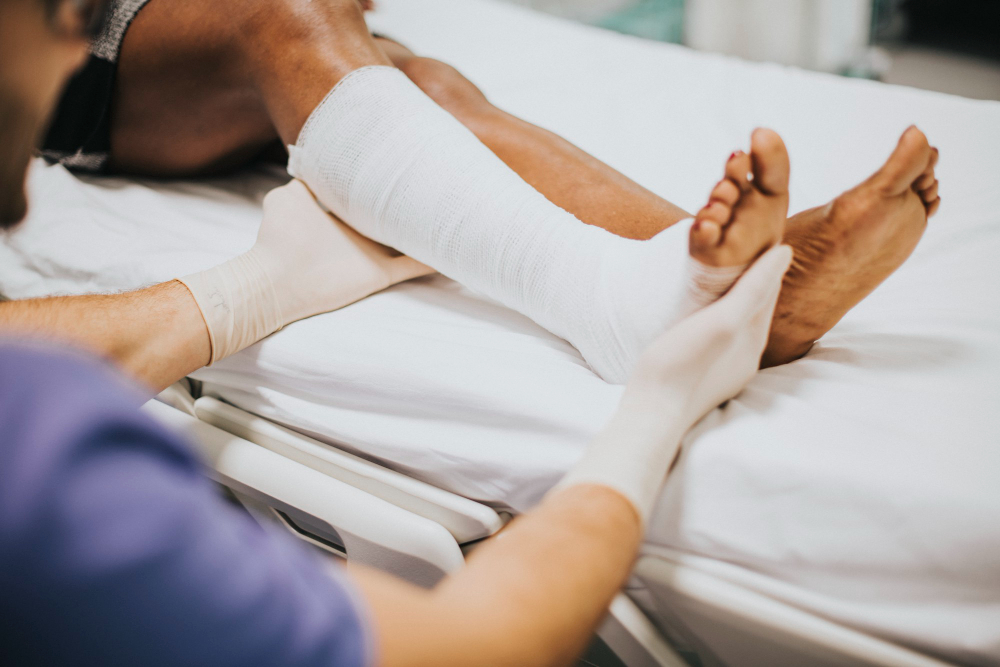The Difference Between a Break and a Fracture

Understanding medical terminology can sometimes be confusing, especially when it comes to injuries like breaks and fractures. Many people often wonder if there's a difference between the two. If you're looking for an orthopedic surgeon in Altamonte Springs, FL, who can provide clear answers and expert care, contact Central Florida Bone & Joint Institute today. In this blog post, we'll explore the distinctions (or lack thereof) between breaks and fractures, the types of fractures, and when to seek professional help.
What Is a Break?
A break, in layman's terms, refers to any disruption in the continuity of a bone. It's a broad term that can describe anything from a slight crack to a complete snap. The term "break" is commonly used in everyday language to describe bone injuries.
Symptoms of a Break
- Pain: Typically sharp and severe, especially when trying to move the affected area.
- Swelling: The affected area may swell considerably.
- Bruising: Discoloration can occur around the injury site.
- Deformity: The limb or area may look out of place or abnormal.
- Immobility: Difficulty or inability to move the affected part.
What Is a Fracture?
The term "fracture" is used in the medical field to describe the same condition as a "break." There is no difference between the two terms; they can be used interchangeably. Whether a doctor says "break" or "fracture," they mean the same thing—a bone has cracked or shattered.
Types of Fractures
Fractures can be classified into several types, depending on the severity and nature of the break:
- Simple (Closed) Fracture: The bone is broken, but the skin remains intact.
- Compound (Open) Fracture: The broken bone pierces through the skin, increasing the risk of infection.
- Hairline (Stress) Fracture: A small crack in the bone, often due to overuse or repetitive motion.
- Greenstick Fracture: The bone bends and cracks only on one side, common in children.
- Comminuted Fracture: The bone is shattered into three or more pieces.
- Transverse Fracture: The break is straight across the bone.
- Oblique Fracture: The fracture has an angled pattern.
- Spiral Fracture: Caused by a twisting force, resulting in a spiral-shaped break.
When to See an Orthopedic Surgeon
Certain signs and symptoms indicate it's time to consult an orthopedic surgeon. If you experience any of the following, seek immediate medical attention:
Severe Pain and Swelling
If the pain and swelling are intense and do not improve with basic first aid measures, it's essential to consult a specialist. Pain that prevents you from using the affected limb or area suggests a more serious injury.
Visible Deformity
A noticeable deformity or misalignment in the injured area is a clear indicator of a significant bone issue. Whether it's a wrist that looks bent in an unusual way or a leg that seems shorter than the other, immediate medical intervention is necessary.
Open Wounds
If the bone has punctured the skin, creating an open wound, this is a compound fracture that requires urgent care. The risk of infection is high, and timely medical treatment is crucial.
Numbness or Tingling
Experiencing numbness or tingling around the injury can indicate nerve damage. This symptom, along with severe pain and swelling, warrants a visit to an orthopedic surgeon.
Diagnosis and Treatment
Diagnostic Procedures
When you visit an orthopedic surgeon in Altamonte Springs, FL, they will likely perform a series of diagnostic tests to determine the extent of your injury. These tests may include:
- X-rays: To visualize the bone structure and identify the type and location of the fracture.
- MRI (Magnetic Resonance Imaging): Provides detailed images of bones and soft tissues, useful for complex fractures.
- CT Scan (Computed Tomography): Offers cross-sectional images for a more comprehensive view.
Treatment Options
The treatment plan for fractures varies based on the type and severity of the break. Here are some common treatment methods:
Immobilization
Most fractures require immobilization to heal correctly. This can be achieved through:
- Casts: Traditional method to keep the bone in place.
- Splints: Used for less severe fractures or during the initial swelling phase.
- Braces: Allow limited movement while still providing support.
Surgical Intervention
In some cases, surgery may be necessary to realign and stabilize the bone. Surgical options include:
- Internal Fixation: Metal rods, screws, or plates are placed inside the bone to hold it together.
- External Fixation: A metal frame outside the body supports the bone while it heals.
Physical Therapy
Once the bone has healed, physical therapy helps restore strength, flexibility, and functionality to the affected area.
Prevention Tips
Preventing fractures involves taking steps to strengthen bones and avoid accidents. Here are some tips to help you stay injury-free:
Maintain Bone Health
- Calcium and Vitamin D: Ensure a diet rich in these nutrients to keep bones strong.
- Exercise Regularly: Weight-bearing exercises like walking, running, and lifting weights help improve bone density.
Safety Measures
- Wear Protective Gear: Use helmets, pads, and other safety equipment when engaging in sports or high-risk activities.
- Home Safety: Keep your living space free of tripping hazards and ensure adequate lighting.
Conclusion
Understanding the difference between a break and a fracture can help you make informed decisions about your health. Both terms describe the same condition and require appropriate medical attention. If you're experiencing symptoms of a fracture or break, don't hesitate to seek professional help.
For those in Altamonte Springs, FL, Central Florida Bone & Joint Institute is here to provide expert care and guidance. Our team of orthopedic surgeons is dedicated to helping you recover and return to your daily activities as swiftly and safely as possible. Contact us today to learn more about our services and how we can assist you.